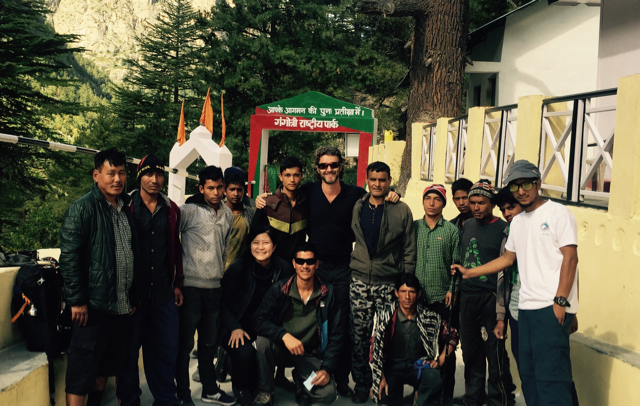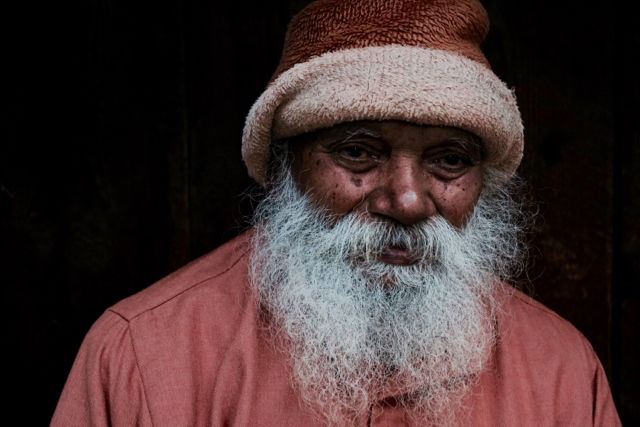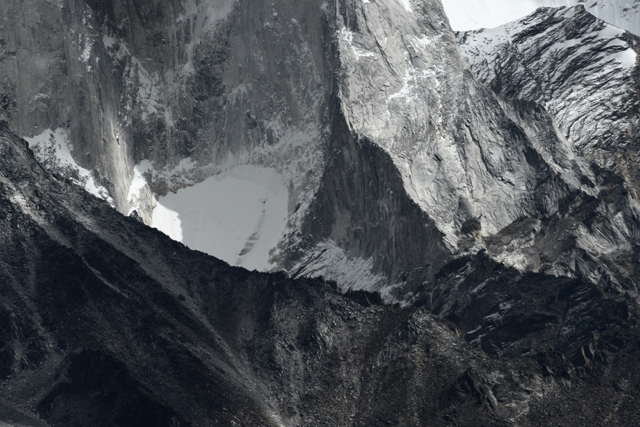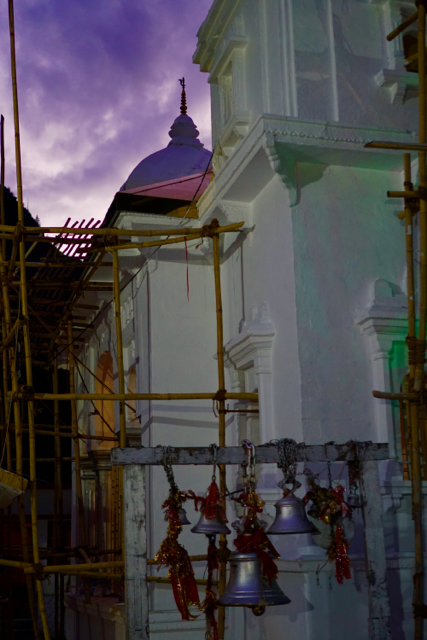First steps towards Gangotri Glacier involve words from an impeccable source. For six decades Swami Sunderland has climbed, wandered, and worshipped the great bodies of ice and stone from his simple home in Gangotri. He arrived here and was held by the silences, and the divine mountain gifts. Whatever the reasons for the great bodies of ice to recede, they do recede and Swami is as wise and observant as a family member.
While visiting him for thoughts upon the plight of the mountains, the future of conservation and care for the heights in general, he uttered the words “When the ice disappears, the gods will disappear”. Prophetic and direct, there was little doubt as to his meaning. We need water and we need to care for the great Himalayan Water Towers. Locals understand the inextricable link that mortals and water have, but there is a feeling that this intuition isn’t shared beyond the mountains. In the cities where faucets are turned, there perhaps needs a greater connection to the sources of the fluid that passes through them.
The entire region is a place of devotion to Shiva and it is from his locks of hair that the Ganges springs, it is said in mythology. In fact it is the Bhagirathi River that we’ll follow upstream in amidst tea breaks and conversations over tea. A veritable transporter of glacial and spring water to the Ganges, it is the Bhagirathi that is at the very source of the source, so to speak. Our journey will head upstream, up and onto the glaciers that feed so much of the fresh water into one of the world’s great waterways, the Ganga.
We’re here to document, to see, and to simply be amidst a world that is devoted to water at every level. The National Park theme works here it seems as much as any ‘system’ can, keeping people and people’s clutter at bay. The Himalayan layers have forever been fascinating platforms by which to ‘see’ and feel, and here in Gangotri it was no different. Temples, pilgrims, ice winds that embrace and find all surfaces line this little hub at the cusp of the world of ice.
Shots of masala chai, a meeting with the team that will aid Debra Tan and I ascend and wander, and a last edit of kit and we are off. Nepali porters, friend Dilip Talekar’s detailed notes upon his last journey to the region and recommendations, and little bits of that wonderful narcotic mountains air are with us as we slowly press west into the great valleys that will lead us to the second largest glacier in Asia.

Nothing ever happens without a team and this case it is a coming together of sorts with new friends, old friends and a plan to ascend onto ice.
It is a series of ice bodies that act as diminishing tributaries to the great Gangotri Glacier.
Pilgrims battle altitude and cold, swami’s tuck away in silent retreat huts, and the rare Blue Sheep abound in this tunnel of ice and worship. To our right torrents of thick glacial water with its telltale green opaqueness roars. We are in the land of Shiva, and the land of Shiva points upwards….





